Designed by Andrew Bromberg at Aedas, the terminus station of the Guangzhou-Shenzhen-Hong Kong Express Rail Link has opened to the public.

November 9th, 2018
Befitting its prominent site on Victoria Harbour, the new Hong Kong West Kowloon Station makes a strong formal gesture to express the speed and scale of the high-speed rail system of which it is a part.
Serving as the terminus of the Hong Kong section of the Guangzhou-Shenzhen-Hong Kong Express Rail Link, it is the line’s only Hong Kong station. The Express Rail Link connects with China’s National High-Speed Rail network all the way to Beijing. The station handles passengers through border controls and has 400,000 square metres of usable floor area.

The fluid form of the Hong Kong West Kowloon Station, designed by Andrew Bromberg at Aedas, was a means of expressing the idea of various forces converging on a global city. Notably, the arcing, ground-hugging form – sweeping over a 45-metre-high internal volume – can be traversed by pedestrians. The landscaped roof offers new vantage points over the city.
“I have been working on this station for nearly ten years,” says Andrew Bromberg at Aedas, “and I cannot wait to see it teeming with people.”
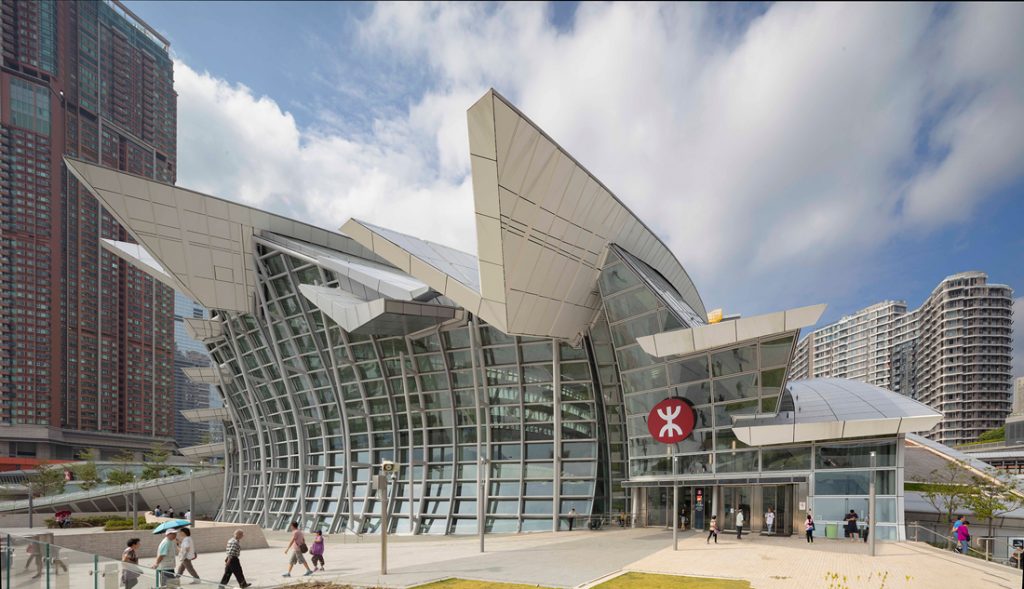
The internal volume is directed toward the south facade, with views focusing on the Hong Kong Central skyline and Victoria Peak beyond. With the station serving as the gateway to Hong Kong, Bromberg considered it vital that it would connect with the surrounding urban context and make arriving or departing passengers aware that ‘I am in Hong Kong’.
The interior of the main hall is washed by natural light that streams in through 4,000 glass panels and a floating roof supported by leaning, tree-like columns. Long curving apertures admit light with consistency across the main departure hall.
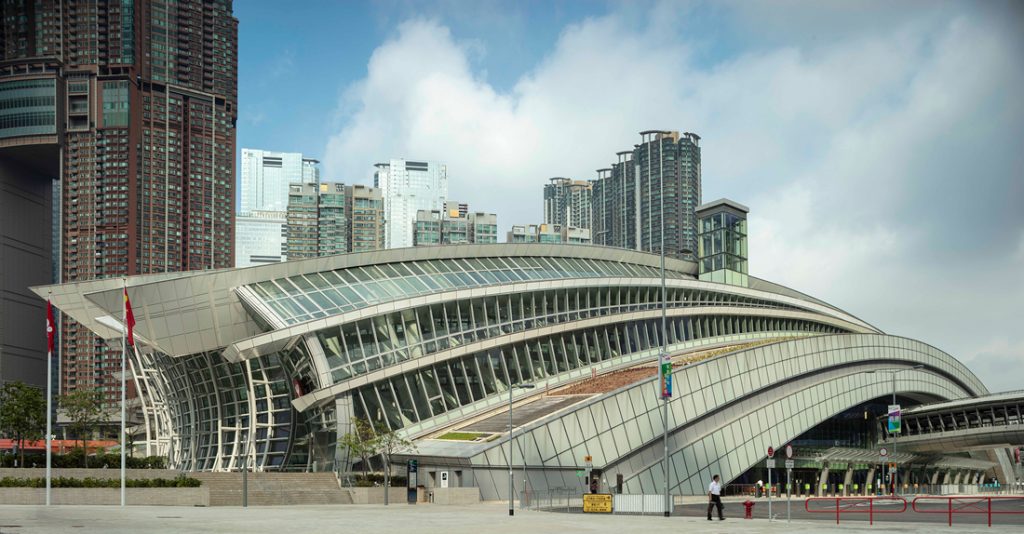
The station is the first major construction project to be completed in the upcoming West Kowloon Cultural District. Seven footbridges and two pedestrian subways connect the station with the local transport network and nearby developments. The development itself offers over three hectares of ‘green plaza’ to its site and people are encouraged to walk into the station’s roof, which reached a height of 25 metres above ground level.
At its lowest point, the station reached 25 metres underground. Hong Kong West Kowloon Station incorporates 15 tracks below ground, nine long-haul tracks and six shuttle tracks. Travel time to the major business areas of the city, such as Central, is around 15 minutes.

INDESIGN is on instagram
Follow @indesignlive
A searchable and comprehensive guide for specifying leading products and their suppliers
Keep up to date with the latest and greatest from our industry BFF's!
The new range features slabs with warm, earthy palettes that lend a sense of organic luxury to every space.

Welcomed to the Australian design scene in 2024, Kokuyo is set to redefine collaboration, bringing its unique blend of colour and function to individuals and corporations, designed to be used Any Way!
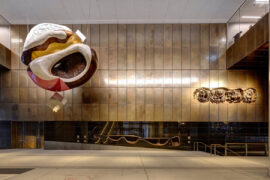
Sydney Open Symposium launches 23 August, bringing together architects, planners and cultural leaders to explore the design and impact of the Sydney Metro Martin Place precinct.

Designed by artist Abdul Abdullah, the porcelain façade for this Melbourne train station has been executed with custom-printed Fiandre DYS panels.
The internet never sleeps! Here's the stuff you might have missed

Curated by the Indesign editorial team and hosted at leading showrooms, the Design Discussions series provided thoughtful reflection and debate on key issues shaping the industry.
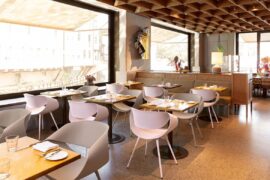
We think of the chair as a ubiquitous object but every now and then there is a design that ticks all the boxes and makes its presence felt on the global stage.
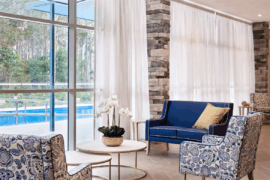
Inspired by an unthinkable design challenge on Sydney Harbour, Materialised’s ingenuity didn’t just fuse acoustic performance with transparent finesse – it forever reimagined commercial curtain textiles by making the impossible possible.
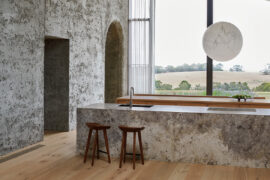
The INDE.Awards 2025 has named House on a Hill by Leeton Pointon Architects and Allison Pye Interiors as the winner of The Interior Space category, presented by Tongue & Groove. This multigenerational country home on Bunurong Country redefines residential architecture and design with its poetic balance of form, function, and sanctuary.